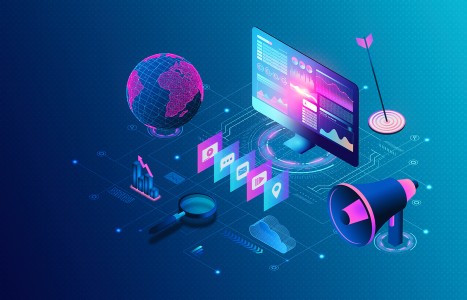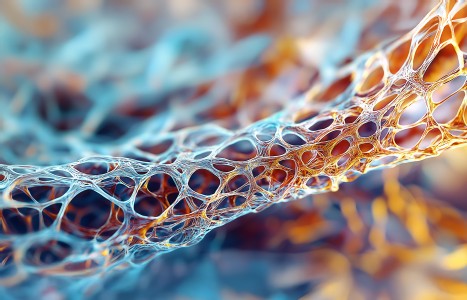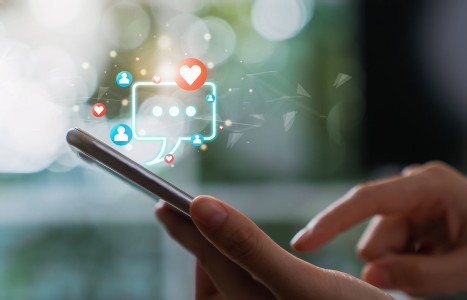Think of your most difficult patient – the one you try to motivate and work so hard with to develop a realistic treatment plan with achievable and measurable goals. Week after week, you see this patient struggle, sinking deeper into hopelessness as their health and quality of life continue to worsen. What if there was something else you could do that could change their outlook and their life? The solution is as simple as an automated program.
| Digital ExclusiveThe Yin Wei Mai and Solar Plexus Chakra Connection: A Valuable Understanding for Treatment of Modern Patients
Most of the texts acupuncturists study in school are translations of works that are hundreds to thousands of years old. They offer diagnoses and treatment prescriptions for syndromes common in Asia, well before the advent of modern society. It is amazing how much power and value there is for modern people in these ancient sources. Yet there are many significant differences between the etiology of disorders for ancient and modern patients that are vital to take into account. These include vastly different lifestyles, degree of exposure to environmental elements, public health practices and the overwhelming globalization of information. Improved sanitation, immunizations and indoor climate control have reduced exposure to some pathogenic influences and help prevent many of the acute symptoms listed in the ancient acupuncture texts. Yet modern life has significantly destabilized people's sense of self and emotional well-being to an extent far beyond the norm in ancient agrarian cultures. This has resulted in tremendous increases in stress-related mental and emotional complaints with physical manifestations.
As a result of this, it is necessary to seek new and more effective treatment methods that help harmonize emotions and support clients on the path to greater self-awareness and self-responsibility for the outcomes in their lives. In my practice, I have found that one of the most effective means to accomplish this is through a combination of traditional extraordinary vessel acupuncture and color-light therapy through the chakra energy centers. Chakra therapies evolved as part of the Ayurvedic healing systems of India, while acupuncture is mainly credited to Chinese and Japanese origins. Integrating both approaches can offer significantly improved results for troubled modern patients.
Each of the seven body chakras is a pulsing, holographic center of life-force energy that has a regulating effect on specific organs, glands, and aspects of mental and emotional experience. A valuable way to understand chakras is as energy transformers. Each one "steps down" high-frequency universal energy to successively lower frequencies that support proper functioning of parts of the body. Each of these frequency levels manifests as a color of light emitted by the chakra.
The colors associated with the chakras higher on the body vibrate at higher frequencies than the colors of the lower chakras. For example, violet, the native color of the crown chakra, vibrates at a frequency that is almost twice as fast as red, the native color of the root chakra. This suggests that the brain and pineal body are powered and nurtured by higher frequency energy that would be disruptive and stressful if applied to the reproductive, eliminative and sexual organs associated with the root chakra.
I use a combination of dowsing with a pendulum and kinesiology (muscle testing) to test the function of chakras, and to determine what color of externally applied light is most therapeutic for an affected chakra. After years of testing hundreds of patients, some interesting observations are apparent. The most striking is that the vast majority of American patients show imbalances in the solar plexus chakra, and that corrective treatment of this center has a markedly positive effect on many of their complaints. This particularly is true when chakra treatment is combined with acupuncture. Many of the patients with imbalanced solar plexus energies also have a slight greenish hue emanating from parts of their faces. This is a diagnostic indicator of liver imbalance in five-element acupuncture teachings.
Let's take a look at the functions and symptoms of the solar-plexus chakra. The solar plexus chakra influences or "rules" the digestive organs, the muscular systems in general, the liver and gallbladder. It also has a general governing effect on the limbs, particularly the elbow and knee joints. On a consciousness level, it expresses personal will, ego, sense of self and effectiveness at relating to or influencing other people and animals. A good CEO, military officer or dog trainer, for example, must have a strong and well-developed solar plexus center. When this center is blocked by various internalized fears, self-doubt and limiting beliefs, people have difficulty getting what they want in life or feeling deep emotions, and easily are subject to anxiety, panic attacks, obsessive-compulsive disorders, worry and paranoia.
Physical diseases associated with the solar plexus center include stomach ulcers, intestinal tumors, diabetes, pancreatitis, indigestion, anorexia/bulimia, hepatitis, cirrhosis, adrenal imbalances, colon diseases, arthroscopy (stiffness of the joints) and many forms of severe mental illness. It also is my observation that people with addictive personalities, insomnia and some forms of depression tend to have overactive or blocked solar plexus centers. Do you recognize many of your patients in this list?
Many people who do not have overt diseases listed above tend to have low-grade feelings of unhappiness, fatigue or vague complaints that arise from an inner stalemate between their efforts to heal or uplift themselves and the underlying imbalances of the chakra. This includes many idealistic people who practice holistic health or spirituality.
Now let's take a look at some of the symptoms listed in classic texts of acupuncture for the yin wei extraordinary vessel1:
- Congealed, stagnant qi, easily loses control, too much thinking, sad, pain in the heart and abdomen;
- Forgetfulness, mental unclarity; and
- Deficiency in the heart, paranoid, shen and thinking are anxious.
The Nan Jing states this relationship for the yin and yang wei vessels: "Yin and yang cannot balance; the (visible) emotions will be thinking too much, obsession, loss of will and lack of self-control."2
Many of the physical symptoms listed for the yin wei, such as "fullness and discomfort in the middle warmer, stagnation or lumps that will not disperse in the intestines, increasing congestion of food, arms are red and swollen" also parallel the diseases and symptoms associated with the solar plexus chakra.
There certainly are some strong parallels between the symptoms and functioning of the solar plexus and yin wei vessel. Both relate to disorders of deep emotions somatizing themselves in the abdominal organs and musculature, and holographically affecting the limbs and skin.
I have treated large numbers of patients using a combination of acupuncture on the chong mai/yin wei vessels and color light therapy through the solar plexus. I did not arrive at these treatments due to examination of the information described in the books listed here. I did because these treatments were indicated through regular intake and diagnosis. It was only after years of seeing this treatment combination come up over and over again that I put this observation together of the synergy and great value of this combination treatment.
The eight extraordinary vessels usually are treated through their confluent points: Lu 7 + K 6 (ren/yin qiao), TW 5 + GB 41 (dai/yang wei), P 6 + Sp 4 (chong/yin wei) and SI 3 + UB 62 (du/yang qiao). Treatment of these point combinations, often in conjunction with other related points, is appropriate if the patient is exhibiting the symptoms associated with dysfunction of the vessel, and meridian/organ diagnosis supports this conclusion. For example, symptoms of chong/yin wei include: heart problems and chest pain with anxiety, palpitations, shortness of breath, neurosis, intercostal neuralgia, herpes zoster and post-herpetic neuralgia, stomach disorders, gynecological problems, cold feet, liver and gallbladder disorders, anus disease, strained back with digestive or GYN problems, some kinds of knee pain, sciatica that shoots down to the big toe or down the inside of the leg (spleen channel), stomach or duodenal ulcer, many kinds of depressive/anxiety complexes.3
If a patient is complaining of any of these symptoms, and meridian diagnosis reveals imbalances of various combinations of spleen, kidney, pericardium and liver, then it usually is appropriate to treat P 6 and Sp 4. I often substitute Liv 3 for Sp 4 if there are marked liver symptoms, and use Sp 4 if the digestive symptoms are more apparent.
If, in addition to these diagnostic findings, the solar plexus chakra is found to be blocked or dysfunctional, it will usually improve the treatment outcome if it is treated in conjunction with acupuncture. Here is a useful procedure for treating the solar plexus:
- If the chakra is found to be imbalanced through dowsing or direct sensing with the hands, ask the patient to touch the center of the chakra with their index finger. Use their other hand for O-Ring kinesiology testing. The muscle test will go "weak" when the chakra is touching an imbalanced or blocked chakra. Ask the patient to continue holding the test point, successively place color filter slides next to the point and re-test the indicator muscle each time. When you find a color that makes the muscle test very strong (while the patient is continuing to touch the weak test point), then that is the color the chakra requires for rebalancing - thus satisfying the "color hunger" of that aspect of the body-mind.
- Apply acupuncture needles to the indicated confluent points, to be left in place during the chakra treatment. With patients for whom needles are inappropriate, the points may be treated with polarized microcurrent probe stimulation.
According to Manaka, most patients being treated for chong/yin wei require - on P 6 and + on Sp 4, treated on the right side of the body only. In about 25 percent of cases, these polarities may need to be reversed. O-Ring kinesiology can be used to confirm the correct choice of polarity - simply treat the points with a polarity placement for one second and then test the muscle, then reverse the polarity, treat another second and re-test. The placement that triggers a rock-solid O-Ring is the one to use.
If the patient exhibits the "Cross Syndrome," in which there are painful, weak or tense abdominal symptoms in the upper-right and lower-left abdominal quadrants, then TW 5 and GB 41 can be added to the treatment on the left side of the body only. TW 5 will usually require - and GB 41 +; again, test and reverse if necessary.
Use a microcurrent and color light probe device1 and set it to polarized probes at about 75 microamps. Place the + probe on the front chakra point and the - probe on the back, over the spine behind the chakra. Treat for about 30-60 seconds with the color of light and polarized microcurrent stimulation. It is very helpful to ask the patient to speak a healing statement during the probe stimulation that helps reset negative beliefs held in the subconscious mind.4
After this treatment, recheck the patient's diagnostic indicators - muscle test of the chakra point, as well as rechecking TCM pulse or abdominal diagnosis. If treatment was well-selected, all will improve, in most cases dramatically.
I have found that one to three treatments of this type have produced wonderful improvements for many patients with complaints of various combinations of pain, internal disease and stress-related emotional imbalances. This has provided a deeper-acting and more comprehensive benefit for the patient.
References
- From the Zhen Jiu Da Cheng, as quoted in Extraordinary Vessels by Matsumoto and Birch. Paradigm Publications, 1986.
- Ibid.
- From Microcurrent Electro-Acupuncture by Darren Starwynn. Desert Heart Press, 2002.
- For details on this procedure called PNE Balancing, please see my article in the Acupuncture Today archives.


